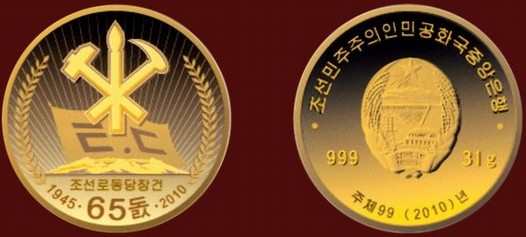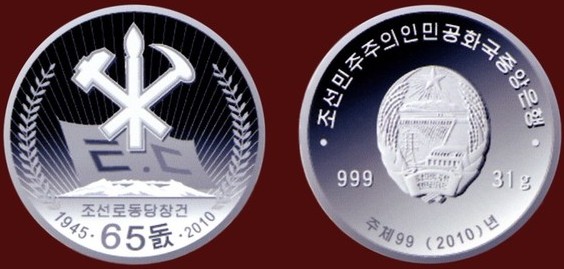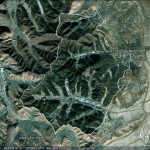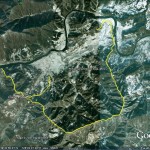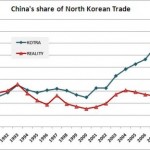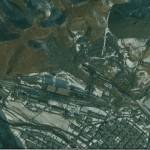UPDATE: The Daily NK (2011-3-7) reports that the DPRK’s recently minted commemorative coins have been been appearing in the markets:
Chosun Workers’ Party cadres who attended the Delegates’ Conference in Pyongyang on September 28th were each presented with a commemorative gold coin. Now, however, some of the same coins have begun to appear on the open market, according to a source from North Pyongan Province who spoke with The Daily NK on Sunday.
The commemorative coins were minted from gold, silver and nickel by the Chosun Central Bank, and form part of a tradition of coin presentation for state events or to commemorate notable national achievements which began with the 75th birthday of Kim Il Sung in 1987 and continued with the joint 50th anniversary of the Party founding and 50th anniversary of the liberation of the country from Japanese rule in 1995.
The money needed to obtain the raw materials for the 2010 coins was apparently gathered by Bukang Trading Company, which operates under the Workers’ Party.
“The Delegates’ Conference commemorative coins which have appeared on the market are mostly being sold by people who trade with China,” the source explained. “They are not pure gold, but there is a good amount of gold in them, so the price is reasonably high.”
Kim, who defected to South Korea in the second half of the 1990s, said that such coins used to be treated with the greatest of respect, explaining, “When I was in North Korea, I saw a number of commemorative coins. Even until the end of the 1990s, people looked after them at home as a precious thing and a source of great pride. The coin itself was evidence of a person’s status.”
However, recently people’s values have changed a great deal. The source from North Pyongan said, “In those days, even a starving man wouldn’t sell a ‘gift’ from the Suryeong or the General. But now, no matter how precious the gift may be, people will sell it in the market without a second thought.”
“Watches with Kim Il Sung’s name on and various commemorative coins do appear in the market sometimes,” he went on, adding, “Things which were beyond our wildest dreams in the olden days are becoming normal. Sellers point out, ‘What am I supposed to do with possession of this kind of thing?’ Having something to eat is better.”
More than being a simple indication of difficult economic times, the act of selling something which was intended to be thought of as a personal gift from a benevolent leader appears to present compelling evidence of the deteriorating authority of the regime and its control of social discipline. This seems to be particularly so given that the commemorative coins must be being sold by cadres, in theory the most loyal group of North Korean citizens and certainly one which needs to remain loyal if the regime is to maintain its grip on power in the long term.
ORIGINAL POST (2010-10-4): The DPRK is issuing gold and silver coins to commemorate the 65th anniversary of the founding of the Worker’s Party.
Images courtesy of Daylife.com.
